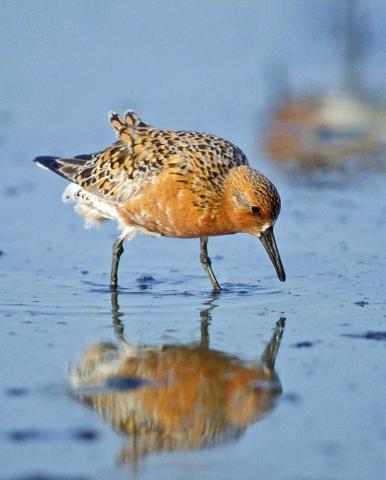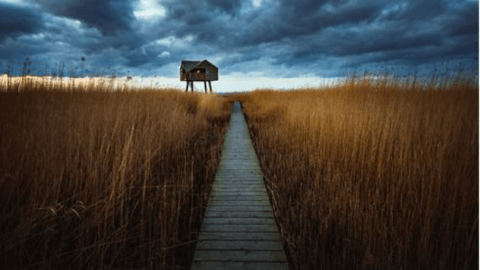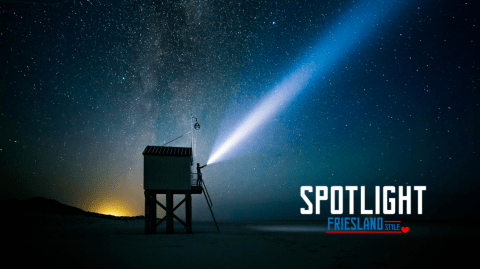Star gazing at the Wadden Sea

For about 7,500 years, the wind and the tides have been shaping the landscape of the Wadden Sea, Europe’s largest linked wetland area. The Wadden Sea stretches for 450km between Den Helder in the Netherlands, along Schleswig-Holstein and Lower Saxony in Germany and up to Skallingen in Denmark.

The UNESCO World Heritage Organisation describes the Wadden Sea as a large, temperate, relatively flat coastal wetland environment, formed by the intricateinteractions between physical and biological factors that have given rise to a multitude of transitional habitats with tidal channels, sandy shoals, sea-grass meadows, mussel beds, sandbars, mudflats, salt marshes, estuaries, beaches and dunes. It is one of the last remaining large-scale, intertidal ecosystems where natural processes continue to function largely undisturbed.

The flat water area is home to numerous plant and animal species, an ideal feeding ground for birds and a nursery for marine mammals such as the harbour seal and the grey seal. In spring and autumn, it hosts migratory birds who take a rest from their long voyages. The Wadden Sea can also feature another natural experience that has become an exception for most Europeans: a dark sky. Thea Bijma from the Province of Fryslân says: “Today, over 85% of the EU territory is subject to some degree of artificial illumination and many people in Europe cannot see the Milky Way anymore. This increasing loss of natural darkness has not only a negative impact on us humans but also on our ecosystems which depend on the natural rhythm of day and night.”
Experiencing a dark sky
The Province of Fryslân where the Dutch part of the Wadden Sea is located, is Lead partner of the Interreg Europe Night Light project. The project partners are determined to intensify their policy efforts to reduce light pollution and protect areas with naturally dark night skies to help preserving vulnerable landscapes and preventing biodiversity loss.
At the same time, the protection of dark skies offers opportunities for sustainable economic development and dark sky areas can be positioned as an asset to develop new eco-tourism services. In Fryslân, they have now implemented the first policy changes by financing two new projects through the Wadden Fund Programme (IKW).
The darkness of the Wadden Sea Region
Based on the input and feedback from the Night Light partners, the Province developed the project ‘Dark Sky Experiences’ (2020-2023) that allows residents and tourists to experience the core quality of darkness at the Wadden Sea World Heritage.

The project puts forward a conceptually coherent approach for night-time activities in the Wadden Sea, connects local actors and creates a completely new tourism product. The project provides the necessary infrastructure for night activities such as special observation points for the night sky, night trails, information boards, rental points for lenses and night vision devices, special benches or hammocks for sky observation, accessible observatory for amateur astronomers, planetarium for bad weather phases and sky gazing points for overnight stays outdoors.
The financing of the ‘Dark Sky Experiences’ project will stop after 4 years but the project has been designed with the objective of creating a new network of existing organisations to ensure that darkness in the Wadden Sea can also be experienced afterwards.
Telling the story of dark skies

The marketing organisation of the Wadden Sea provinces works with storytelling. It aims to attract more sustainable tourists and to raise the awareness of entrepreneurs and inhabitants on the special values of the area. One of the new storylines that has been adopted is the dark sky in the Dutch Wadden Sea region and how the dark sky can be experienced.
Thea Bijma explains: “The Night Light partners strongly recommended to use story telling as a tool to connect to dark sky tourism and to develop a strong branding. Therefore, we have made specific storytelling about ‘darkness’ part of our marketing plan in 2018 and once we launched the ‘Discover the dark’ campaign in 2019, the impact has been excellent.”
The ‘Discover the Dark’ campaign has been launched at the end of September 2019. 20 journalists covered the kick-off and 96 publication reported about the event. According to the evaluation report (2019), 12,500 unique visitors have visited the friesland.nl website and the media, bloggers and influencers that have covered the event had a potential reach out to 3.5 million followers.
For the Province of Fryslân, the discovery of the darkness has opened new opportunities both for protecting the unique beauty of the Wadden Sea and for creating an attractive new offer for sustainable tourism for many years to come.
For more inspiration and information:
- The Night Light video
- Dutch Wadden Sea website
- Story Night Light project: The unexpected potentials of a dark night sky
- GPP-Stream project Good Practice: Energy Efficient Street Lightening in Zlatograd, Bulgaria
- European Commission, Revised GPP criteria for road lighting
- National Geographic article: Nights are getting brighter, earth is paying the price
- European dark sky projects
- The International Dark Sky Association website
Photo Credits: Jan van de Kam, CC BY 2.5, via Wikimedia Commons; henriette valkema on Unsplash; www.visitwadden.nl
